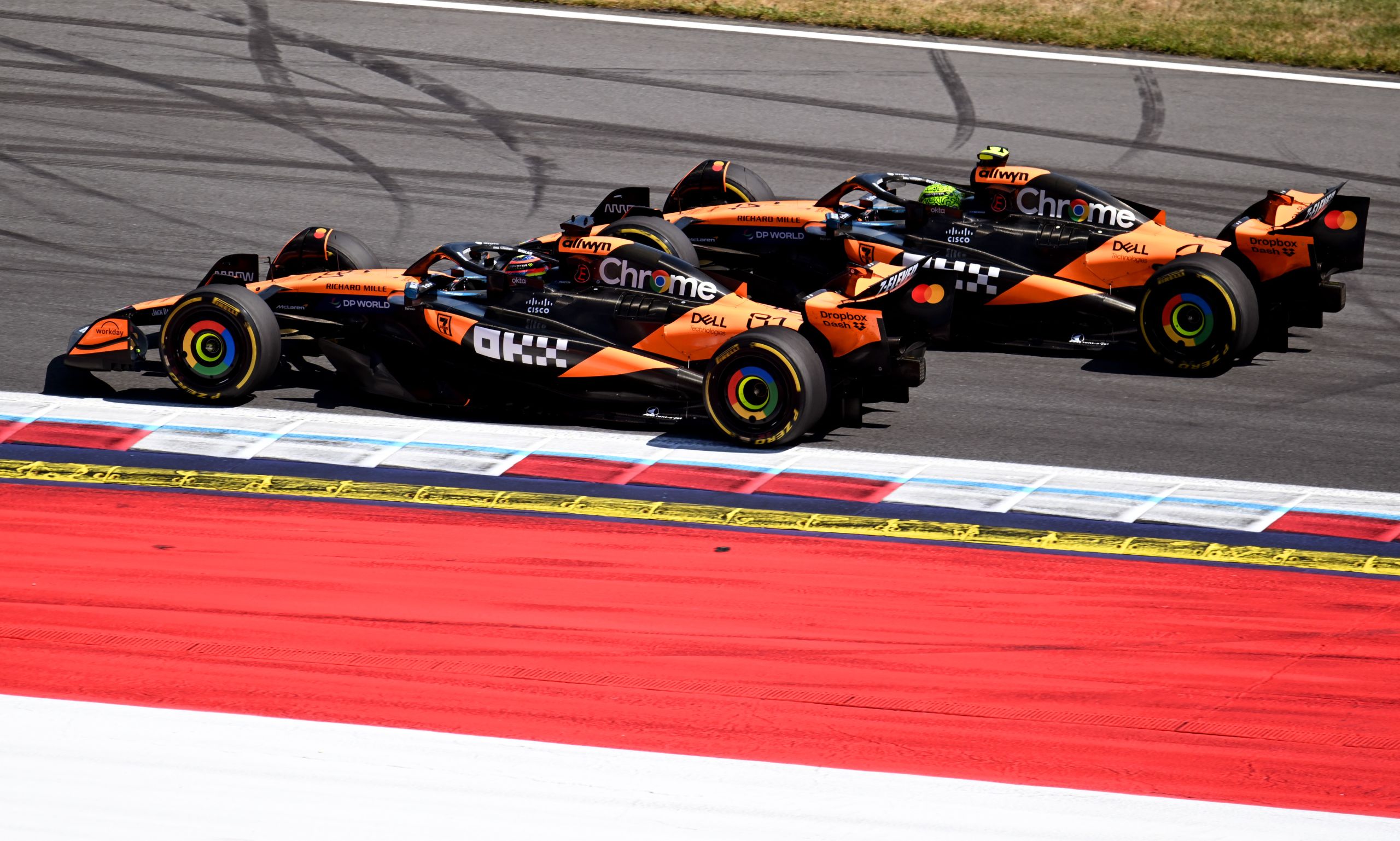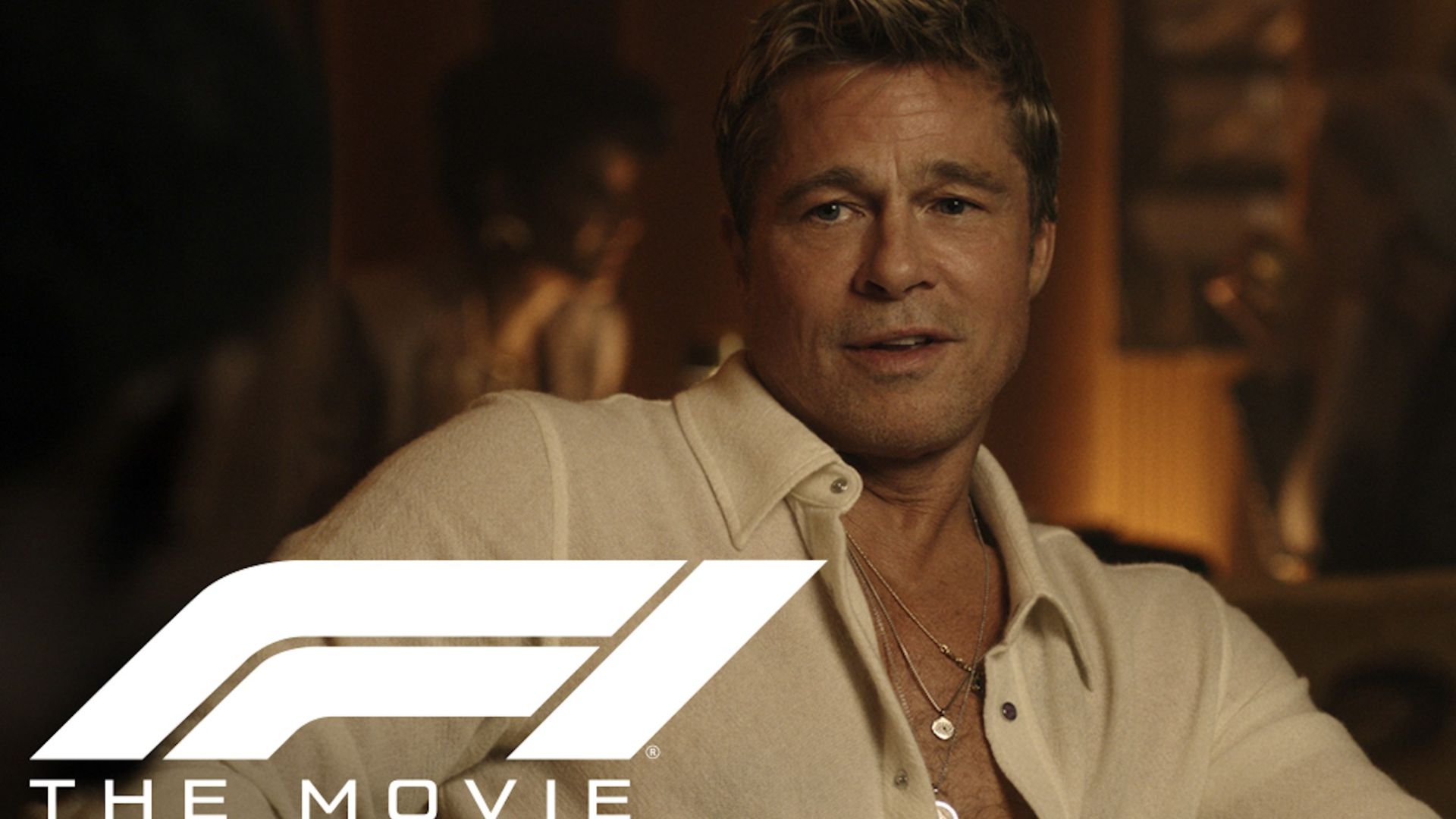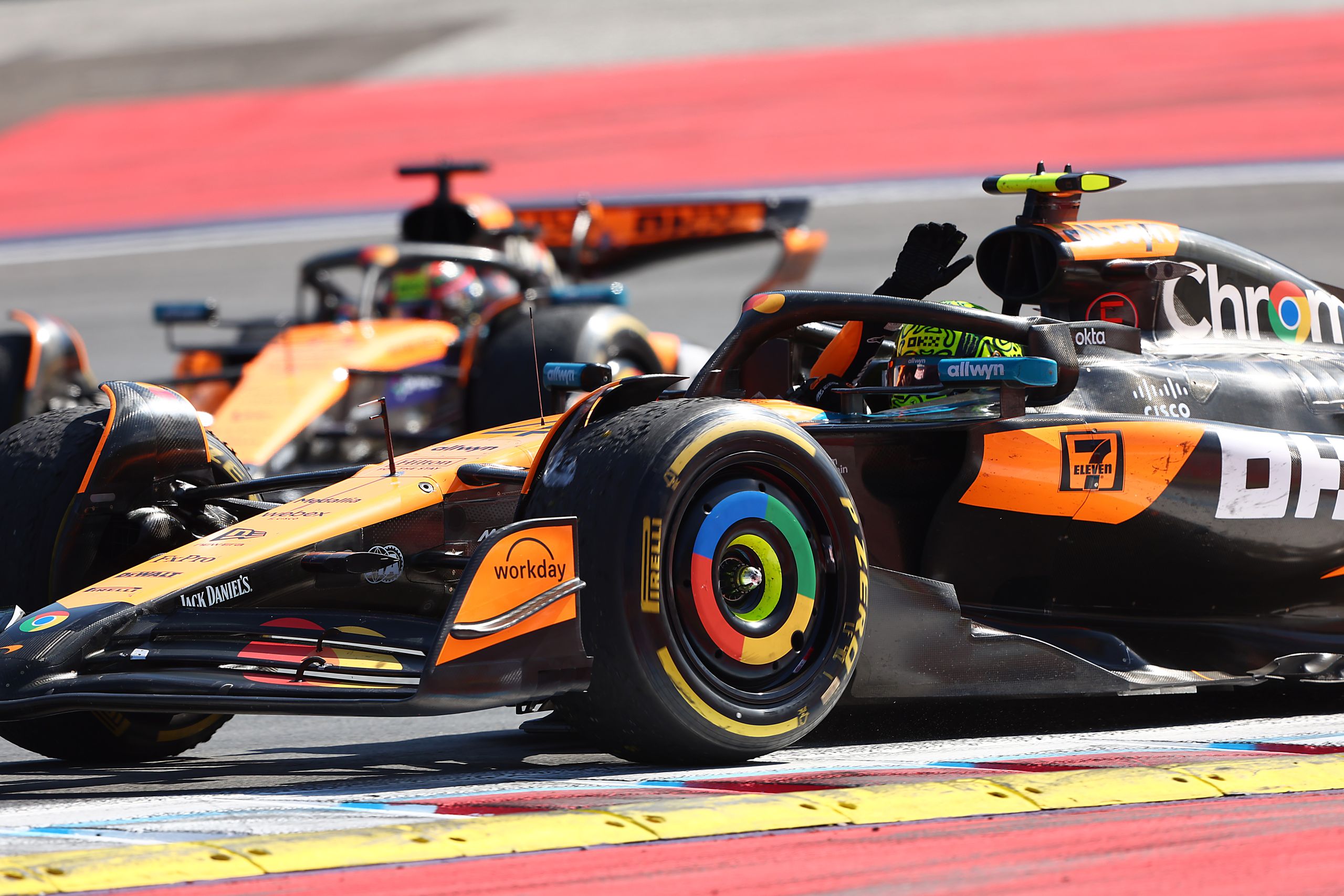How Hot Is An F1 Cockpit?
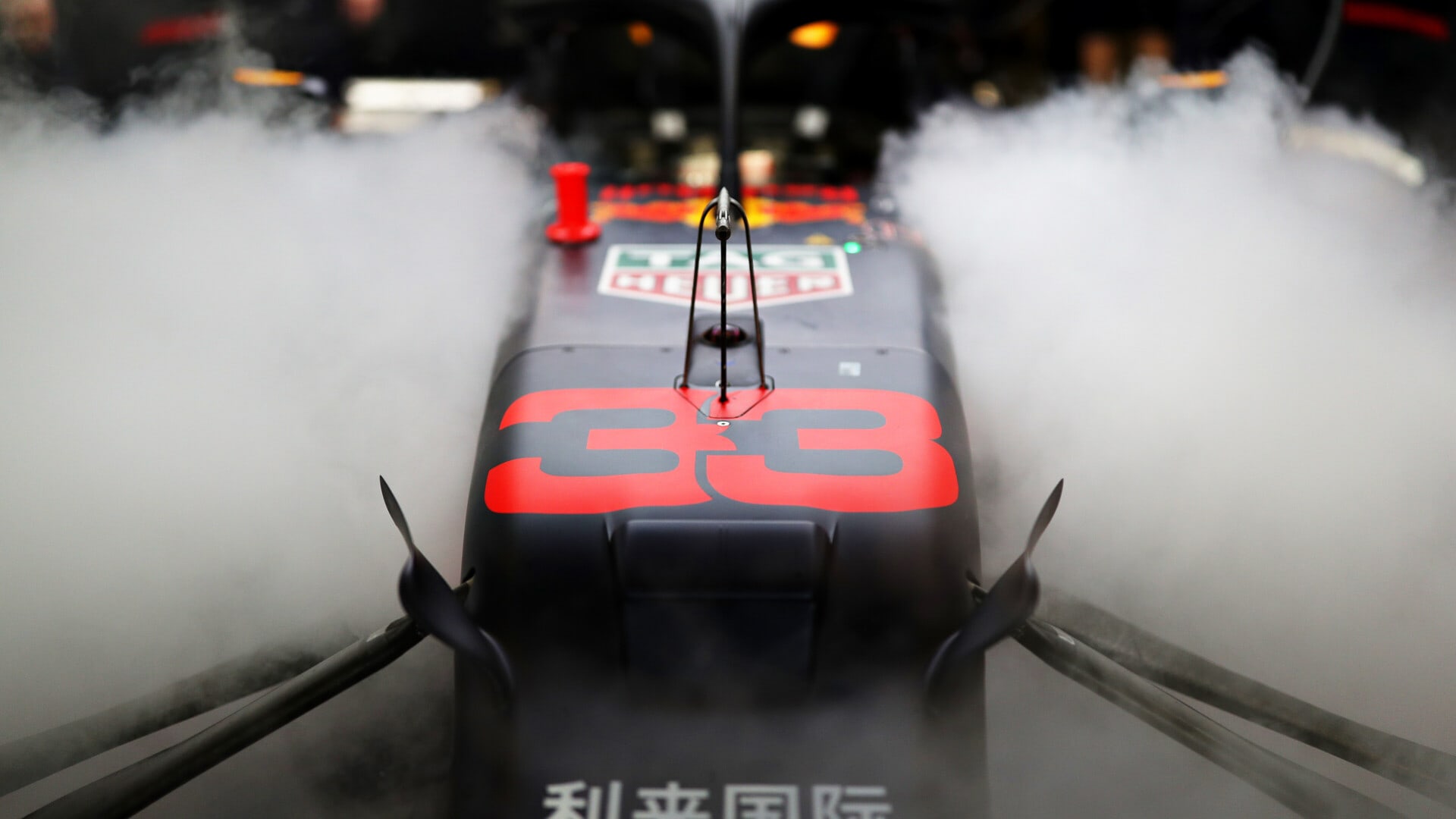
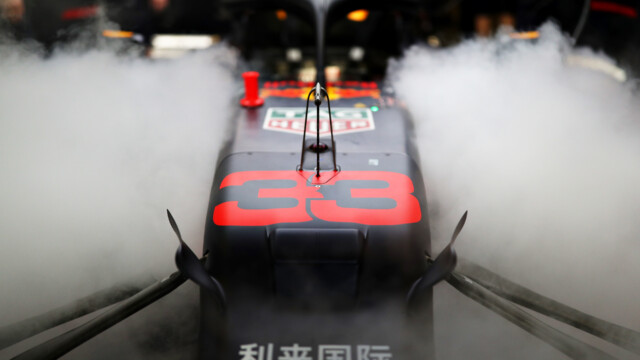
The temperature inside a Formula 1 cockpit can get up to 60 degrees Celsius (140 degrees Fahrenheit). That’s from the engine, brakes and the car’s aerodynamics. Drivers are in there for up to 2 hours wearing multi-layer fireproof suits, gloves and helmets that all retain heat.
Unlike road cars, F1 cockpits are sealed in with no air flow. No air con and limited ventilation due to aerodynamics and structural constraints. So heat builds up fast in the cockpit and puts a lot of physical demand on the driver.
On top of the heat, drivers also have to deal with other factors that can affect their performance, G forces, tyre wear and fuel consumption. All of these require careful planning and management, and all contribute to the overall complexity and challenge of driving an F1 car…
What causes the F1 cockpit to get so hot?
Several factors contribute to the high temperatures inside an F1 cockpit:
Proximity to the engine
The cockpit sits just in front of the power unit. As the engine operates at high temperatures, much of that heat radiates forward into the chassis and driver area.
Brake heat
The brake discs can reach temperatures of over 1,000 degrees Celsius. Heat from the brake ducts and wheels radiates toward the driver’s feet, especially during heavy braking zones.
Aerodynamics
Modern F1 cars are designed to manage airflow tightly around the chassis for performance, not cooling. Heat is often trapped within the bodywork, with limited channels to vent it away from the driver.
Minimal airflow
Drivers sit in a confined space with little direct airflow. Most of the fresh air is directed to cool engine components rather than the cockpit, making natural ventilation ineffective.
How do F1 drivers cope with the heat?
Despite the extreme conditions, drivers must maintain full concentration and physical control throughout a race. To manage the heat:
- Cooling systems: Some teams integrate small helmet cooling systems, which blow air across the driver’s head and face. However, these systems are limited by weight and packaging constraints.
- Hydration systems: Each car includes a drinks system that allows the driver to take small sips of fluid through a tube during the race. Dehydration is a major concern, especially on hot circuits like Singapore or Qatar.
- Race suits and helmets: FIA-approved suits are designed to balance fire protection with some breathability. Helmets may include vents, but airflow is still minimal.
In some cases, drivers lose up to 3 kilograms of body weight during a hot race due to sweat and fluid loss. Teams monitor driver condition closely, especially in extreme weather events.
Does the weather affect cockpit temperature?
Yes. Air and track temperatures directly influence how hot the cockpit becomes. On cooler race days, cockpit temperatures are more manageable. On hot weekends, especially at slower circuits with fewer straights, the temperature can climb quickly and stay high for the full race.
Tracks with long straights, such as Baku or Monza, offer moments of relief as high-speed airflow temporarily reduces internal heat. However, in street circuits or high-downforce tracks with tight corners, heat can accumulate rapidly and persist.
How do F1 drivers not get heatstroke?
Avoiding heatstroke in a Formula 1 car requires a combination of physical preparation, hydration management, and race-day monitoring. Drivers are trained specifically to tolerate heat stress, as cockpit temperatures often exceed what would be considered safe in other sports.
Physical conditioning
F1 drivers undergo intensive cardiovascular and heat-adaptation training. Pre-season programs often include hot-weather training environments or sauna sessions to condition the body to handle elevated core temperatures. A well-conditioned athlete can regulate internal temperature more efficiently, reducing the risk of heat-related illness.
Hydration strategies
Drivers hydrate aggressively before, during, and after a race. Electrolyte-rich fluids are consumed in the hours leading up to a session to maintain hydration levels. During the race, a drink bottle system supplies small amounts of fluid through a tube in the helmet. While the amount consumed may be limited, it helps prevent rapid dehydration.
Pre-race cooling
Before stepping into the car, drivers often use cooling vests or chilled towels to lower their body temperature. This creates a buffer, delaying the onset of heat stress once the race begins. Some also use cold water immersion or fans inside the garage to manage core temperature during grid procedures.
Real-time monitoring
Teams monitor environmental conditions and driver performance throughout the event. If a driver begins to show signs of overheating—slowed reaction times, radio confusion, or reduced pace—engineers may adjust strategy or increase communication checks. In extreme heat, races may include additional safety precautions like extra medical personnel or shortened sessions.
Regulation and safety
The FIA imposes strict standards on driver safety equipment, including minimum ventilation requirements in helmets and suits. In extreme weather conditions, the FIA can issue warnings or mandate changes to race procedures to protect drivers from heat-related risks.
Despite all of this, the risk remains real. Drivers regularly finish races near physical exhaustion, and recovery protocols are critical. The ability to withstand such temperatures without suffering heatstroke is a reflection of both elite conditioning and disciplined heat management.
Does an F1 car have aircon?
No, Formula 1 cars do not have air conditioning systems. Air conditioning adds weight, consumes power, and requires packaging space—all of which are unacceptable in the highly optimised world of F1 engineering. Every component on the car is designed for maximum performance and minimum mass, and comfort systems like aircon are not a priority.
Instead, F1 teams rely on minimal ventilation and driver cooling methods that are lightweight and efficient. These may include:
- Small air ducts that direct limited airflow toward the driver’s helmet or torso
- Helmet cooling systems that blow ambient air across the face
- Pre-race cooling suits or cold fluid vests used before the driver gets into the car
While these methods offer some relief, they are not equivalent to conventional air conditioning. Once the race starts, the driver must rely on physical fitness, hydration, and mental focus to endure the heat.
In hot races like Singapore or Qatar, managing body temperature becomes a critical part of performance. Despite the extreme temperatures, the priority in F1 remains on speed, reliability, and aerodynamic efficiency, not driver comfort.
What do F1 drivers see in a cockpit?
F1 drivers have a number of instruments and displays available to them inside the cockpit of their car. These are designed to provide the driver with information about the car’s performance and the conditions of the race, and they are an important part of the driver’s overall situational awareness.
Some of the things that an F1 driver might see in the cockpit include:
- Speedometer: This displays the car’s current speed.
- Tachometer: This displays the car’s engine RPM.
- Fuel gauge: This displays the car’s current fuel level.
- Gear indicator: This displays the car’s current gear.
- Tire pressure and temperature gauges: These display the pressure and temperature of the tires.
- Lap time: This displays the driver’s current lap time.
- Rev lights: These are a series of lights that are mounted on the steering wheel and are designed to help the driver shift gears at the optimal RPM.
- Steering wheel display: Many F1 cars now have a display mounted on the steering wheel that provides the driver with a range of information, such as lap times, tire temperatures, and fuel usage.
- Rearview mirrors: These allow the driver to see what is happening behind the car.
In addition to these instruments and displays, F1 drivers also have a number of controls at their disposal, including pedals for the throttle and brake, and a steering wheel with a variety of buttons and switches. These controls allow the driver to manage the car’s speed, braking, and handling, and they are an essential part of the driver’s toolkit for navigating the track and competing in the race.
Do F1 cockpits fill with water?
It is not common for the cockpit of an F1 car to fill with water. While it is possible for water to enter the cockpit if the car becomes submerged in a body of water or if it is driven through a deep puddle, this is not a typical occurrence during a race.
F1 cars are designed to be as aerodynamic as possible, and this often means that they have a relatively low ground clearance. As a result, they may be more prone to splashing through puddles or picking up water from the track surface, but they are not typically designed to be driven through deep water.
If an F1 car does become submerged in water or is driven through a deep puddle, the driver may experience reduced visibility and may have to rely on the car’s rearview mirrors or team communications to navigate the track. In such cases, the driver may also have to take care to avoid hydroplaning, which can cause the car to lose traction on the wet surface.
Overall, while it is not uncommon for F1 cars to encounter wet conditions during a race, it is relatively rare for the cockpit to fill with water.
How do F1 drivers know where to turn?
F1 drivers rely on a variety of cues to help them navigate the track and know where to turn. Some of the things that an F1 driver might use to orient themselves on the track include:
- Track markers: Most tracks are marked with lines, cones, or other markers to indicate the racing line and the location of the turns. These markers can help the driver visualize the layout of the track and help them plan their line through the turns.
- Race engineer: The driver’s race engineer is typically located in the team’s pit area and provides the driver with a constant stream of information about the race, including lap times, tire wear, and fuel usage. The race engineer may also communicate with the driver about the location of other cars on the track and any changes to the track conditions.
- Dashboard displays: Many F1 cars now have a display mounted on the steering wheel that provides the driver with a range of information, including a map of the track and the location of other cars. This can be especially helpful when the driver is approaching a turn and needs to know where to brake and turn in.
- Rearview mirrors: The driver can use the rearview mirrors to see what is happening behind the car and to get a sense of the location of other cars on the track.
- Team radio: The driver can also communicate with their team via radio to ask for information or to report any issues they are experiencing on the track.
Overall, F1 drivers rely on a combination of these cues to help them navigate the track and know where to turn. This requires a high level of spatial awareness and the ability to process and respond to a large amount of information in a short amount of time.
From F1 news to tech, history to opinions, F1 Chronicle has a free Substack. To deliver the stories you want straight to your inbox, click here.
New to Formula 1? Check out our Glossary of F1 Terms, and our Beginners Guide to Formula 1 to fast-track your F1 knowledge.



